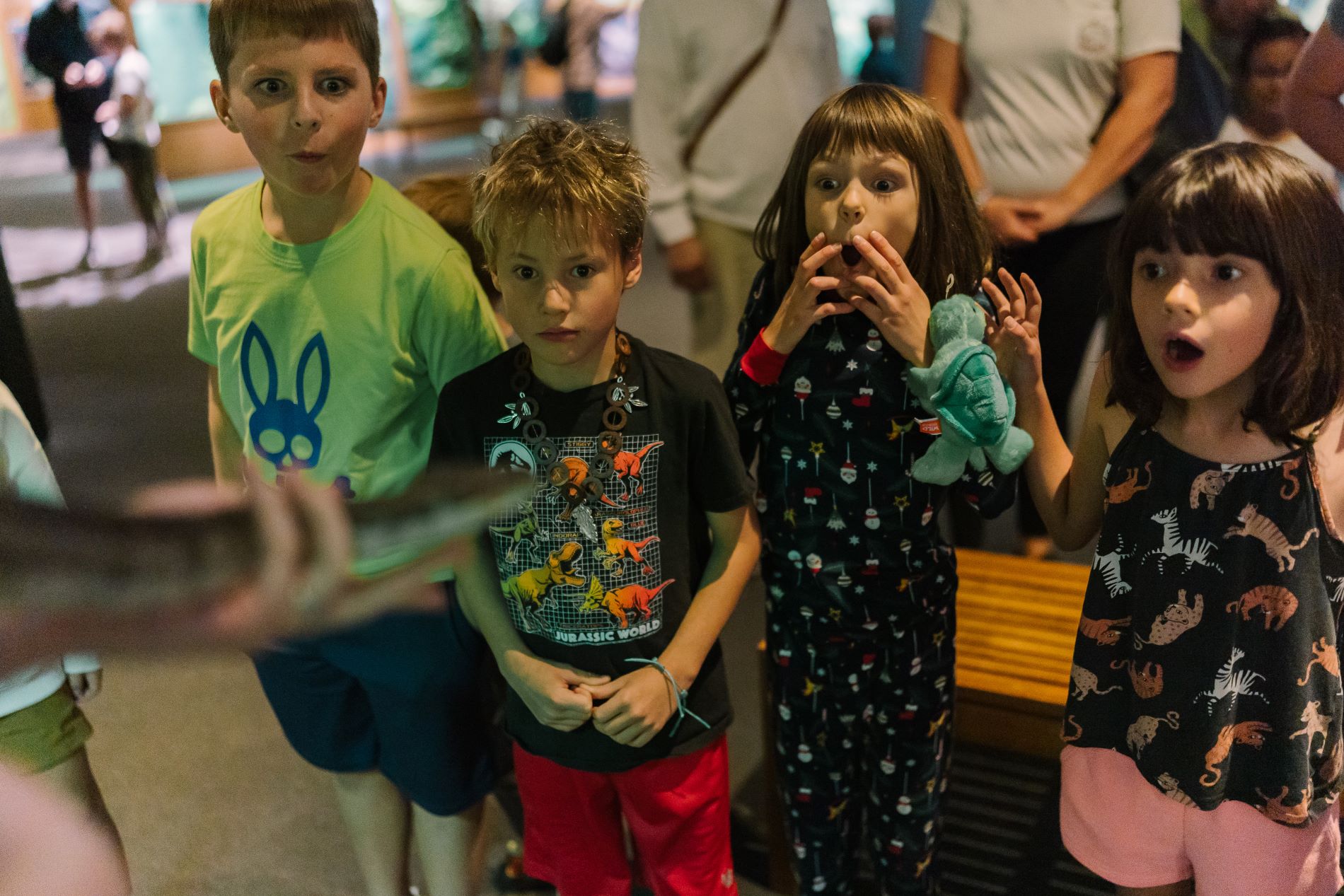
The Denver Museum of Nature & Science’s latest exhibition, “Animals of the Rainforest,” invites guests to step into the tropics and meet fascinating live animals who call this magical ecosystem home. This exhibition offers a unique chance in Denver to experience and better understand the rainforest’s unmatched biodiversity and have a blast while doing it!
In this article, we introduce you to seven of the exhibition’s star species. Read on to learn their names, learn a bit about their personalities and uncover their background and stories that led them to star in “Animals of the Rainforest.”
Sloth "JJ": Cutest Eater EVER!
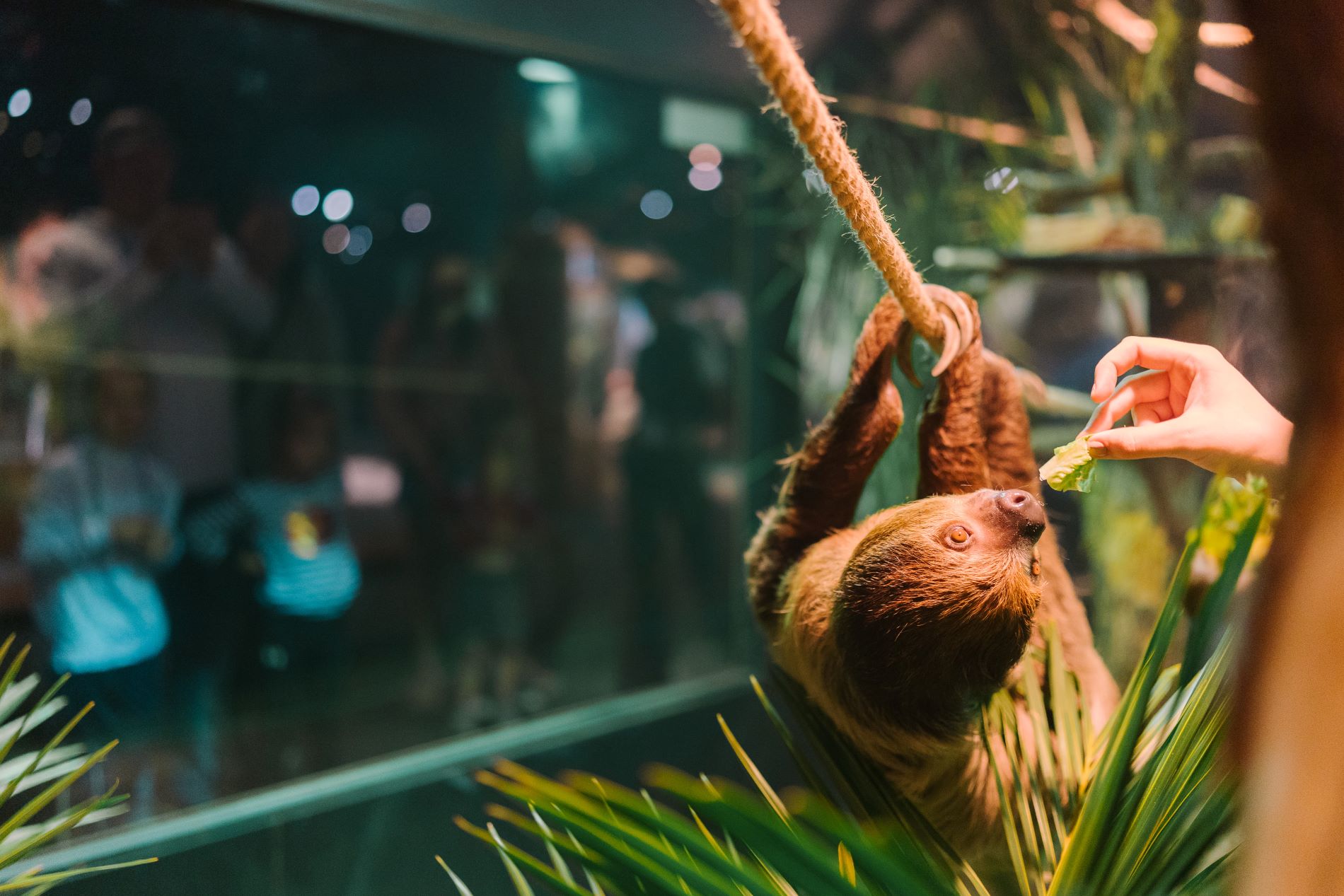
JJ, the two-toed sloth, eats lettuce from the hand of his wildlife caregiver. (Photo/ Mio Sison III)
JJ, a charming two-toed sloth, is definitely a fan favorite! At just five-years-old, JJ has no problem winning the hearts of our team and guests alike with his gentle personality and love for hand-fed treats.
When you visit JJ, you’ll likely spot him lounging in his favorite spot under a gentle mist that keeps his enclosure at the right humidity. Although sloths are known for being slow movers, JJ has a surprising amount of enthusiasm when it comes to food. The truth is, he can be a bit selective — he’s known to reject food one day and devour it the next. If you are lucky enough though, you may get to see him chow down on his favorite snack: apples.
Black Roughneck Monitor "Echo": Super Genius

Black roughneck monitor in "Animals of the Rainforest" at the Denver Museum of Nature & Science. (Photo/ Rick Wicker)
Echo, a black roughneck monitor, is highly intelligent and requires daily enrichment activities to stay engaged. Her favorite activities include solving dog puzzles, taking walks and chasing insects. When you look at her, you’ll notice that she also gives off "tiny dinosaur” vibes — we know that’s sure to please the many fans who come to visit our world-class dinosaur exhibitions.
Read more: Teen Rex Discovery Roars into the Denver Museum of Nature & Science
Echo has a long, anteater-like tongue useful for eating ants and a pointed, bird-like face that helps her retrieve food from crevices. Echo is sensitive to her environment and reacts to crowds or tapping on the glass. So, if you visit, please follow the signs and respect the barriers in place that are meant to just give her a little extra space to keep her happy, healthy and ready for her next puzzle.
Box Turtle "Speedy:" A Little Bit Shy
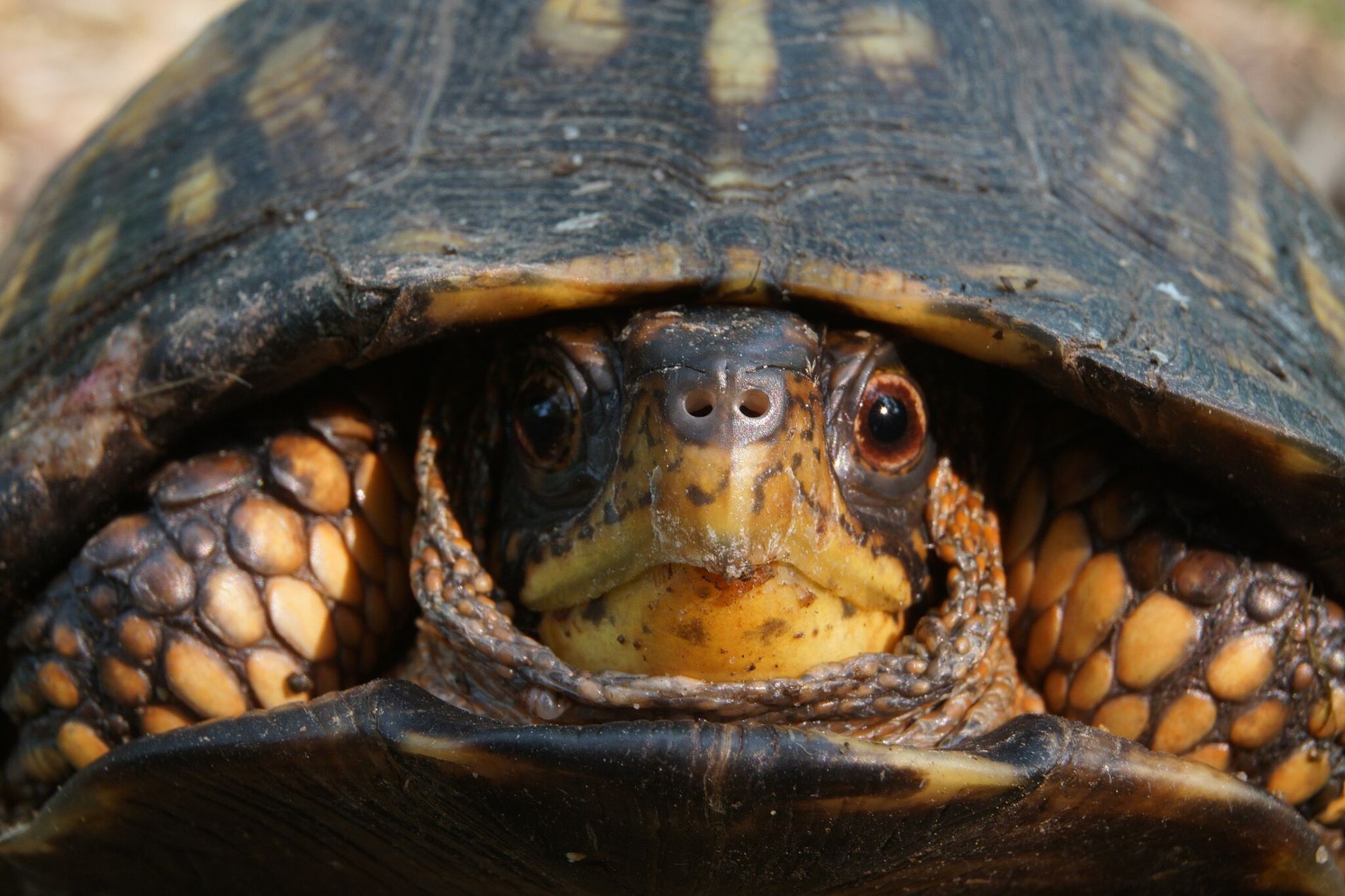
Eastern Box Turtle in St. Mary's City, Maryland, USA. (Photo/ Jasper Shide via Wikipedia Commons)
Speedy, a box turtle, is named Speedy because after a delicious meal, he will “dart” — this is all relative for a turtle — across his enclosure. At top speeds, he can cover the three- or four-feet distance in a thrilling 20 seconds. Speedy, when he’s not “running,” can also hide himself completely in his shell by tucking in his legs, tail and head. While many turtles have hinged shells, box turtles are unique in their ability to close their shells completely.
For those who are patient, Speedy’s mealtimes are worth the wait. While he’s shy and often boxes himself up for extended periods before eating, his caretakers will bury him in the soil and, for some reason, that makes him feel extra safe and coaxes him to poke his head out and eat his food.
Green Iguana "Casper:" A Real Sweet Guy
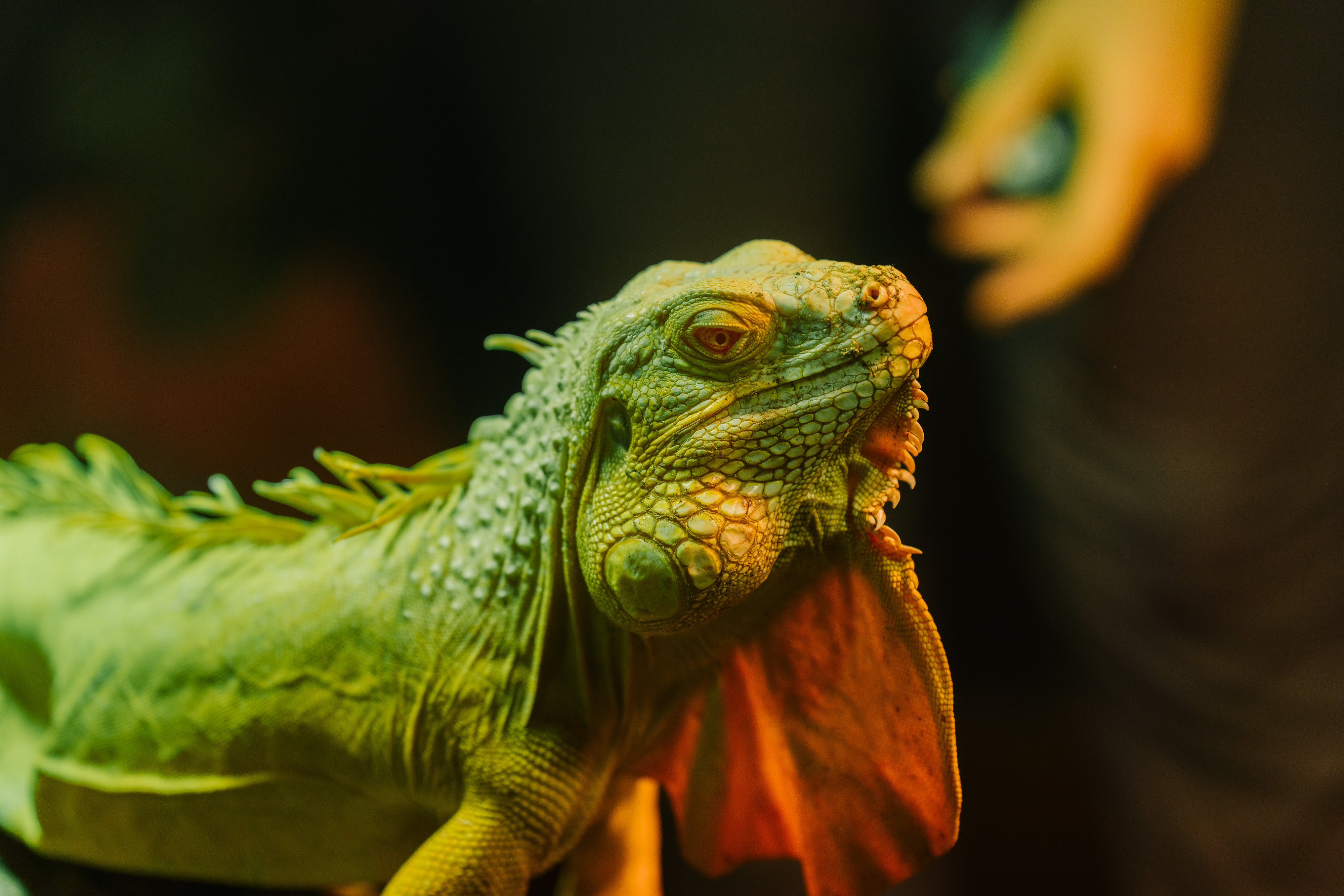
Casper, the albino green iguana, hangs out in his enclosure in "Animals of the Rainforest" at the Denver Museum of Nature & Science. (Photo/ Mio Sisson III)
Casper joined Little Ray’s about two months ago as a rescue, and it’s clear from his many scars that he’s been through a lot. His wildlife caretakers suspect he may have once housed in an enclosure with another iguana, which isn’t good because male iguanas are solitary and territorial with other males. Thankfully, his days of competing for food and space are behind him, and he’s now settling into his new life with his caretakers.
When you visit, you may notice that Casper’s coloring is more yellowish rather than green. That’s because Casper is an albino green iguana, a genetic condition that removes the green pigment from his skin and affects his eyesight, making him almost blind. You’ll often see him gently pressing his nose against walls or using his feet to feel out his surroundings as he explores. Because of his visual limitations, his caretakers make sure not to move things around in his habitat too much. Keeping his environment consistent helps Casper feel safe and comfortable.
But just know, when it comes to head scratches, Casper is all in! His caretakers will often come into his enclosure to give him a gentle rub, and when that happens, he leans toward them, shutting his eyes in peaceful bliss.
Dumpy Tree Frogs "The Rangoons": Sometimes Spicy
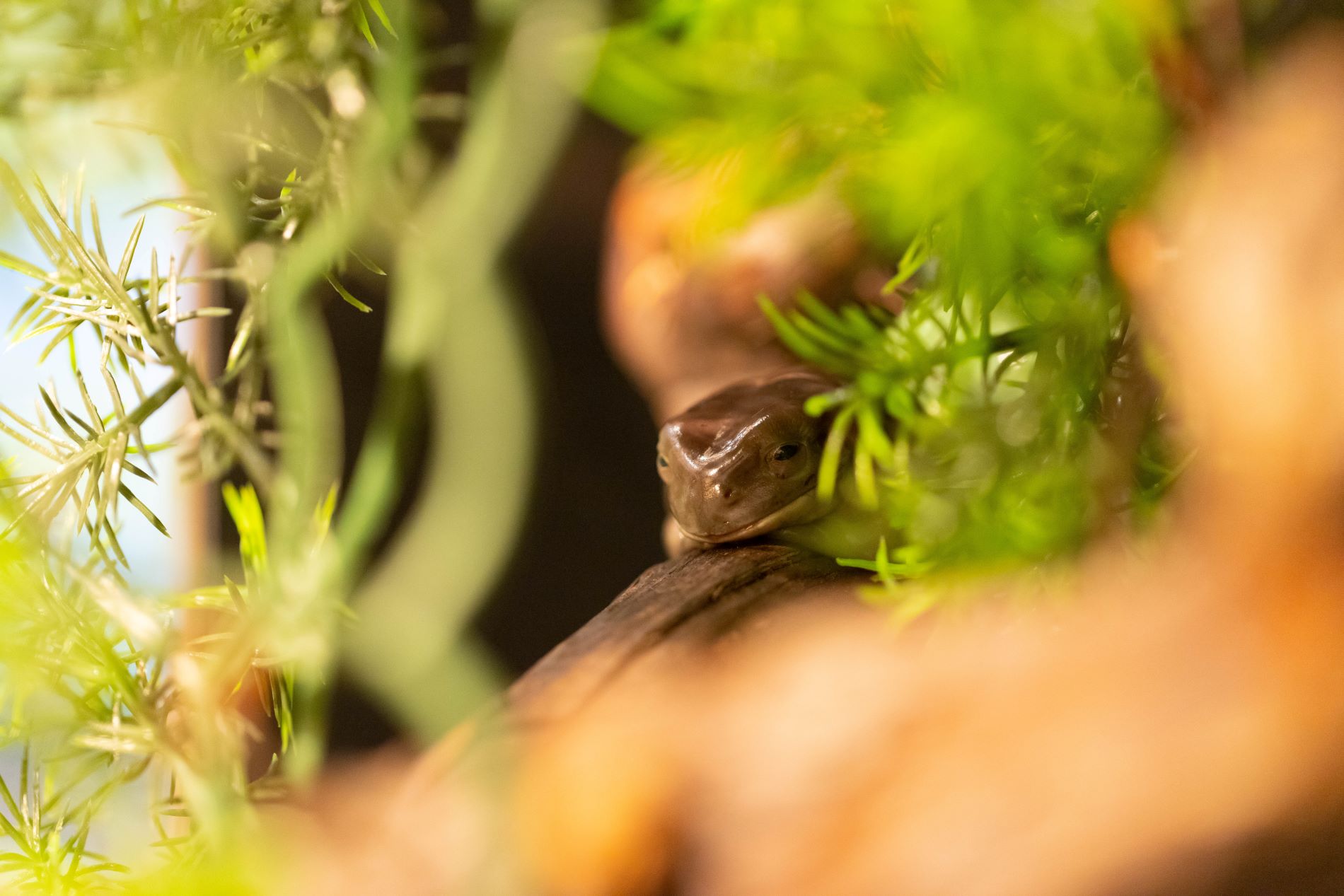
The dumpy tree frogs' camouflage abilities allow them to hide well, with colors ranging from browns to pretty greens that change with their environment. (Photo/ Little Ray’s Exhibitions and FARE - Foundation for Animal Rescue and Education)
The Rangoons, named Big Bao, Dumpling, “Spicy Chili Oil” Wonton and Rangoon, each have their own quirky personalities. Big Bao lives up to their name by being the biggest eater and most active of the group. They will often sit in a prominent spot in enclosure, taking in the limelight. Wonton, sometimes referred to as Spicy Chili Oil Wonton, can sometimes get a little spicy, especially during feedings, where they may refuse food and show off his “fancy feet.”
Dumpling and Rangoon tend to be a bit more reserved, often hiding in the background or blending into their surroundings with their brown and green hues. Despite Dumpling’s smaller size, they’re always eager to eat, which perfectly matches their name. Rangoon, the shyest of the bunch, is a pretty typical tree frog that just likes to just hang out and relax.
The Rangoons' camouflage abilities allow them to hide well, with colors ranging from browns to pretty greens that change with their environment. In the wild, they would be up in the trees, but they also sometime burrow and hide in the ground.
For those who visit on Friday evenings from 8 p.m. to 9 p.m., you can hear the dumpy tree frogs croaking during this nocturnal hour if you're lucky.
Tokay Geckos "Koopa" & "Thwomp": Fierce Biters
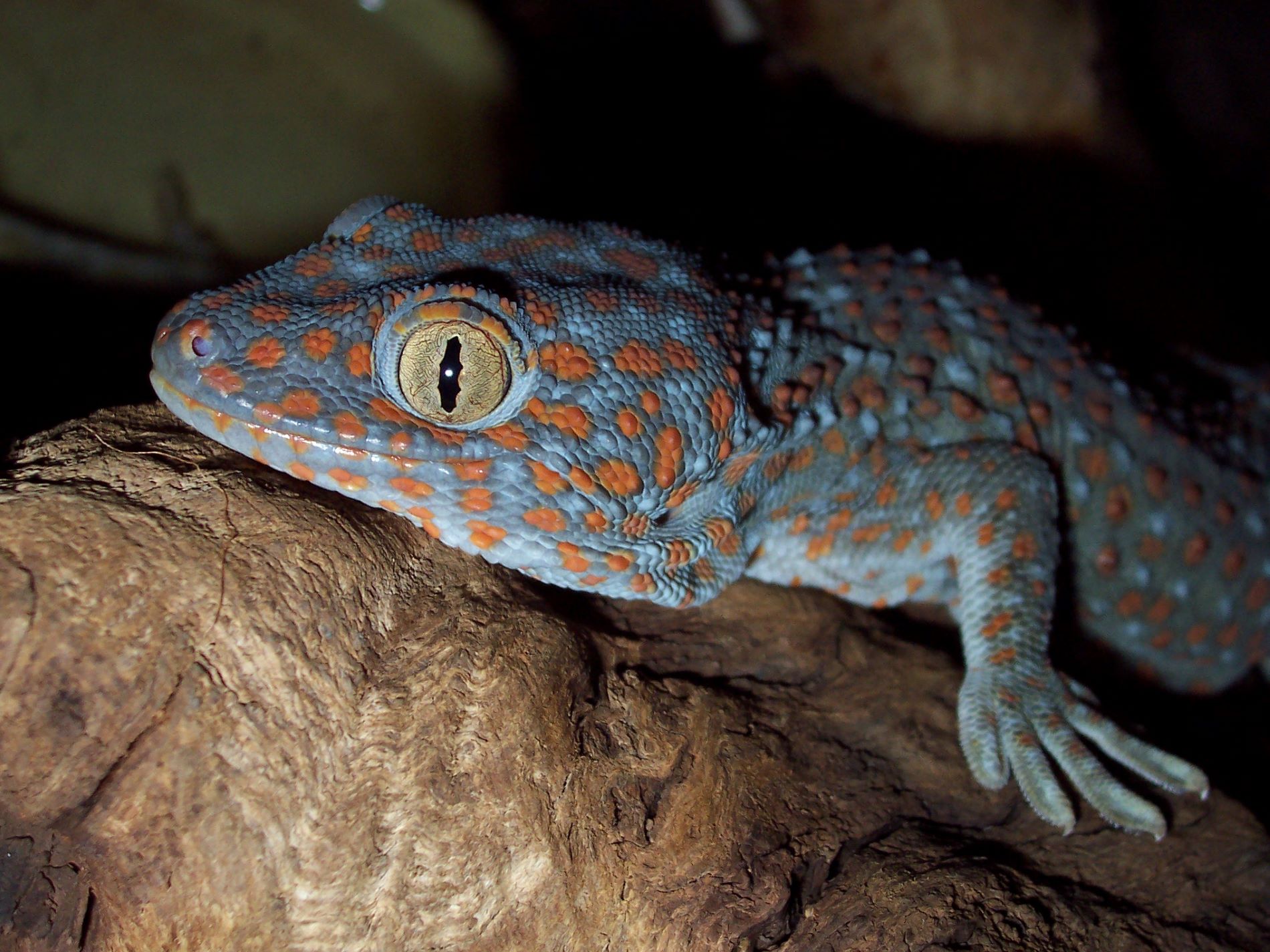
Known for their vibrant blue and orange speckled skin, tokay geckos are stunning to look at. (Photo/ Robert Michniewicz via Wikimedia Commons)
Tokay geckos are unique members of the "Animals of Rainforest” exhibition. Known for their vibrant blue and orange speckled skin, these geckos are stunning to look at. But in addition to being pretty, they are one of the more defensive gecko species with a super strong bite. Interestingly, their bite is strong enough that, if provoked, they may bite down so hard that they risk injuring themselves, even going as far as to break their own jaws. This intense defensive response is one reason they remain in their enclosures rather than being taken out very often when visitors are present.
Koopa and Thwomp definitely have distinct personalities and behavior. Thwomp is more outgoing and frequently visible, often moving along the walls and jumping on plants. Koopa, on the other hand, is shyer and more likely to retreat to a dark corner. This species has some remarkable abilities as well; they can change their skin color slightly depending on their mood. They are also known to bark, making a sound that’s something similar to a shooting laser beam.
Tortoises "The Avengers": Friendly Head Bobs
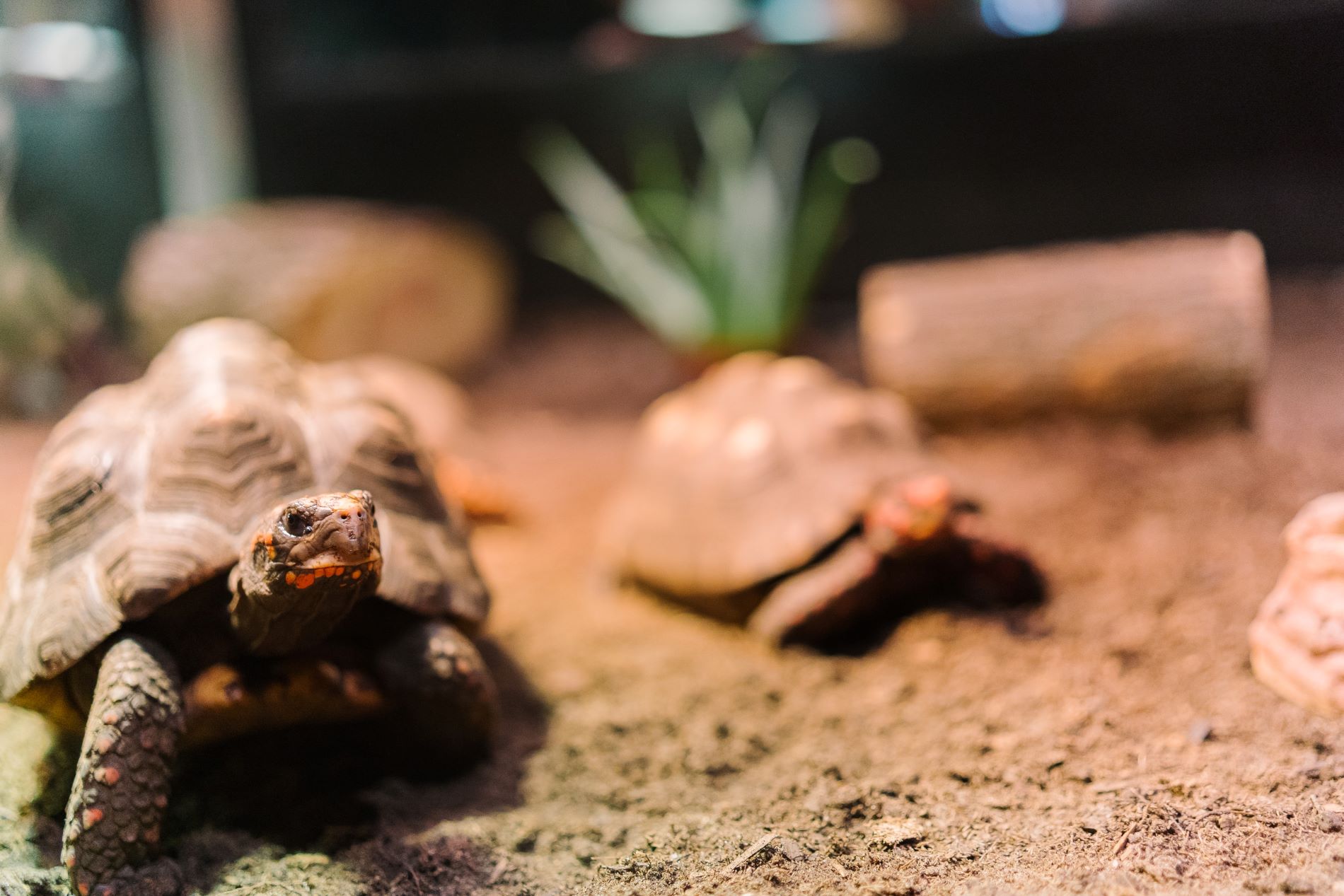
One of the main ways that red-footed tortoises communicate with each other is through head-bobbing. (Photo/ Mio Sisson III)
When you meet the red-footed tortoise squad, you’ll find that “slow and steady” can be surprisingly lively. Groot, the only male and the biggest of the bunch, is often spotted lounging under his self-dug foggy spa. Captain America, one of the smaller females with a splash of cherry-red on her beak, is a salad-loving star and definitely lives up to her heroic name. Alongside her is Rocket, the youngest, born right with Little Ray’s can be recognized for her smooth shell, a testament to her five-star upbringing. Lastly, there's Hawkeye, whose mountainous shell ridges tell a story of resilience, reflecting a challenging past that she has overcome.
Unlike many of the other animals in the exhibition, these tortoises are very social animals. One of the main ways that they communicate with each other is through head-bobbing. They also engage in play with each other by coming behind their friends and encouraging them to chase them around. Super cute, super fun: You’re sure to love the tortoise Avenger crew.
Visiting the "Animals of the Rainforest" exhibition at the Denver Museum of Nature & Science offers an amazing opportunity to connect with the rich biodiversity and learn so much more about one of the world’s most vibrant ecosystems. We hope you visit us soon to meet these amazing animals, learn their stories and experience the rainforest right here in Denver!